What Is Stainless Steel Jewellery?

Jewellery made from stainless steel consists of carbon, iron 10.5% chromium and at most 1.2% carbon. Stainless steel is combined with other alloys like nickel and titanium for added durability.
The chromium present in stainless steel forms a protective layer over the metal, preventing corrosion and tarnishing. There are different grades of stainless steel which are determined by its structure and composition,
How Do You Know If Jewellery Is Made From Stainless Steel?
There are many ways to identify if a piece of jewellery is made from stainless steel. Here are some non abrasive ways to check if you jewellery is made from stainless steel:
- Hallmarks - stainless steel jewellery may have a 316L hallmark, however it is more likely that it won't have a hallmark at all. If you silver jewellery doesn't have a hallmark, it is most likely made from stainless steel or another metal alloy.
- Use a magnet - stainless steel is a non magnetic jewellery, so if you jewellery is not attracted to a magnet, then it is likely made from stainless steel.
- Appearance - stainless steel has a less bright and greyer look to it compared to other silver metals like sterling silver, white gold and platinum.
- Weight - stainless steel jewellery has a heavy weight to it, in comparison to precious metals like sterling silver.
Is Stainless Steel Good For Jewellery?
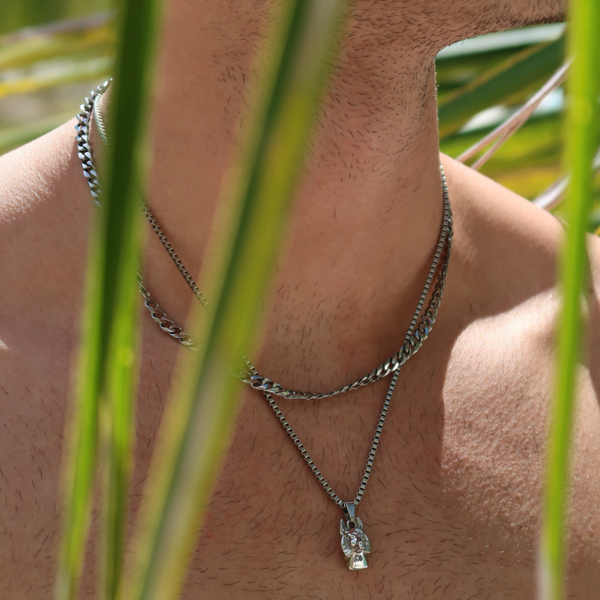
Yes, stainless steel is a great material for jewellery. Some of the main reasons for this include:
- Hypoallergenic - stainless steel has a lower nickel content than most metals
- Resistant to tarnishing & corrosion - because of the protective chromium layer
- Resistant to scratching & denting - stainless steel is an extremely durable and strong metal.
- Affordable - stainless steel is an inexpensive metal
- Low maintenance - stainless steel jewellery is durable and requires little maintenance to maintain its lustre.
- Versatility - stainless steel jewellery can have different finishes including brushed, engraved, matte and glossy
Find out more about why stainless steel is a great material for jewellery, as well as some of the drawbacks of the material by reading our blog which compares the pros & cons of stainless steel jewellery.
Does Stainless Steel Jewellery Tarnish, Discolour, Go Green or Rust?
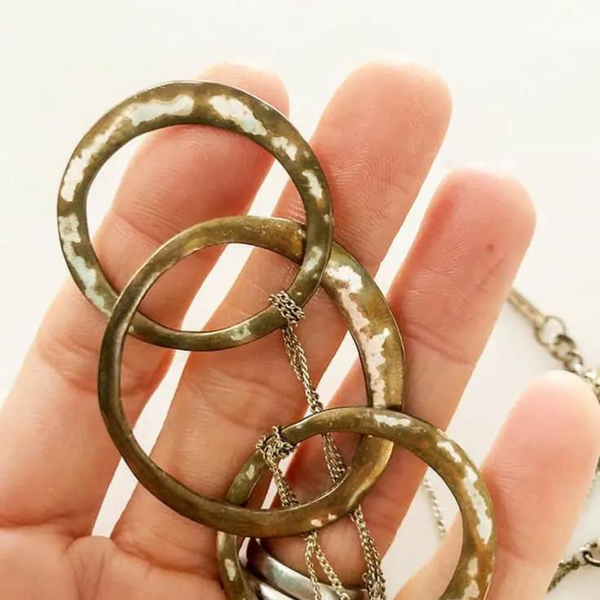
No, stainless steel jewellery does not tarnish, discolour, go green or rust. This is because of the presence of chromium, which forms a protective oxidative layer above the metal. This prevents the metal from reacting with moisture and oxygen in the air, which is the common cause of metals tarnishing and changing colour.
Does Stainless Steel Jewellery Discolour Skin And Make it Go Green?
No, stainless steel jewellery doesn’t discolour skin and makes it go green as it has a low nickel content. The metal itself will not oxidise, meaning it won’t turn your wrist, neck or fingers green when you are wearing jewellery. Usually, this green discolouration is because the acids in your body are reacting to the copper, brass or nickel content in the jewellery. This is common in cheaper types of jewellery.
Is Stainless Steel Jewellery Waterproof?
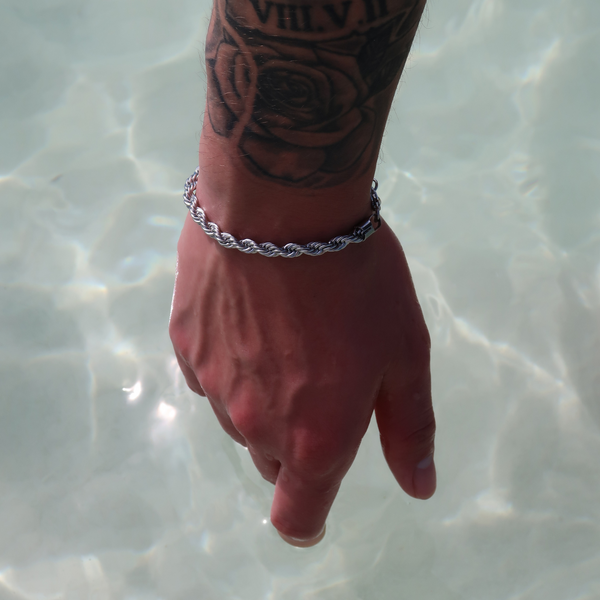
Yes, stainless steel jewellery is waterproof and will not lose its lustre and colour with regular contact with water. This means you can wear stainless steel jewellery in the shower, pool and even in the ocean. The reason that stainless steel jewellery is waterproof is because of the protective chromium layer.
Is Stainless Steel Jewellery Magnetic?
No, jewellery that is made from stainless steel is not magnetic. If your silver jewellery piece is magnetic, then it is likely to be made using another material. However, with this being said, some types of stainless steel are magnetic. The reason that stainless steel is not magnetic is due to the presence of austenite. Even though stainless steel has high amounts of iron, austenite makes them non-magnetic.
Is Stainless Steel Jewellery Safe To Wear?
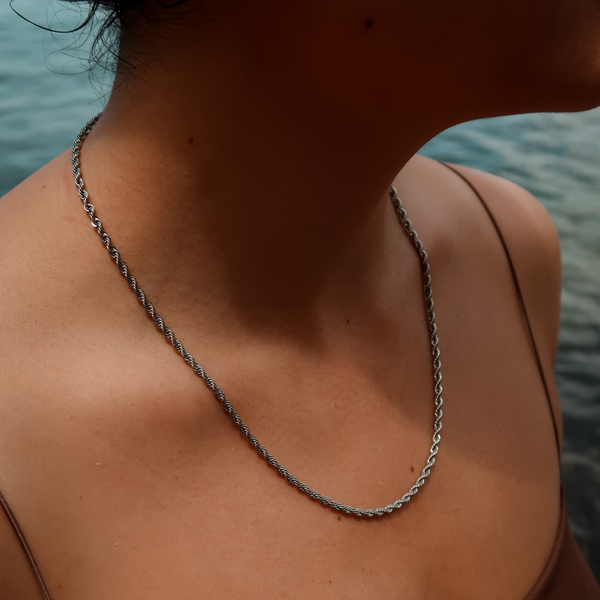
Yes, medical-grade stainless steel is safe for the skin. You will want to check before buying stainless steel the alloys used, as some alloys can irritate the skin. The most common alloy that causes skin allergies and discolouration is nickel.
Is Stainless Steel Jewellery Valuable?
No, stainless steel jewellery is not considered valuable as it is not made from precious metals like gold and silver. Gold and silver jewellery tend to go up in value over time, whilst the value of stainless steel won’t. Stainless steel is an easily accessible material and is one of the most common metals in the world.
How Do You Clean Stainless Steel Jewellery?
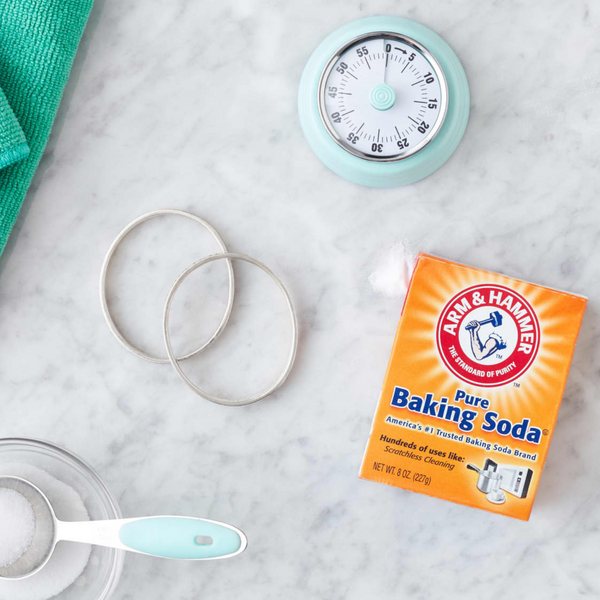
There are many different methods you can clean your stainless steel jewellery. One of the easiest ways is to use a mixture of dish soap and warm water. For a more abrasive clean to get rid of tough-to-get dirt, you can use toothpaste or baking soda with a bit of water. For a more convenient cleaning, investing in an ultrasonic cleaner may be a great option.
To learn more about the supplies you’ll need to clean your stainless steel pieces, and the do’s and dont’s of cleaning stainless steel jewellery, check out our blog which covers how to clean stainless steel jewellery.
Is Brushed Or Polished Stainless Steel Better For Jewellery?
Brushed stainless steel has a more matte finish and is less reflective. Whilst polished stainless steel has a mirror-like finish.
In general, polished stainless steel will be more durable and resistant to tarnishing and corrosion. This is because it will have a smaller surface area in comparison to brushed stainless steel. Often, impurities & dirt can get trapped within the small gaps on brushed stainless steel, causing it to degrade at a much faster rate.
Whether brushed or polished stainless steel jewellery is better for you will depend mostly on your preferences in regards to appearance.
Stainless Steel vs Surgical Steel Jewellery: Which Is Better?
Stainless steel and surgical steel are two types of metals whose names get used interchangeably. Surgical steel is a type of stainless steel that is suitable for medical applications. Surgical steel falls within stainless steel, however, not all stainless steel is surgical grade.
Both stainless steel jewellery are exceptionally resistant to corrosion, resistant to rusting & durable. However, comparing surgical steel with stainless steel, surgical steel offers great resistance to corrosion and rusting and is much more durable.
This is the reason we use 316L stainless steel for all of our jewellery. 316L stainless steel is a form of surgical steel that is long-lasting and durable.
Stainless Steel vs Sterling Silver: Which Is Better?
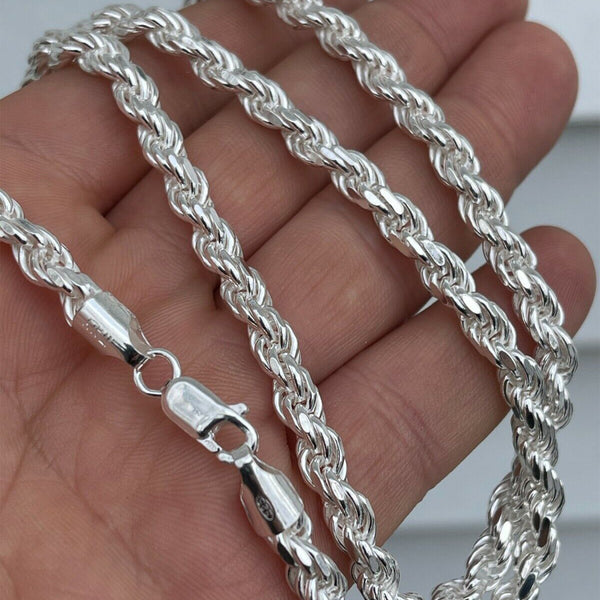
Whether stainless steel or sterling silver jewellery is better for you will depend on what you are looking for. Both types of jewellery have their unique characteristics, pros and cons.
Stainless steel jewellery is known for its durability, corrosion & tarnish resistance, hypoallergenic properties & affordability. Whilst sterling silver jewellery is known for its bright white lustre, ability to create intricate designs and have a higher value as a precious metal.
Need some more information about these two types of silver-toned jewellery? Check out our blog which covers stainless steel vs silver jewellery.











































